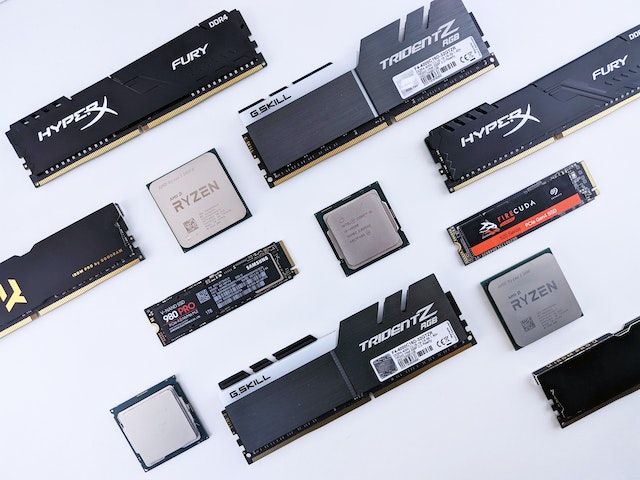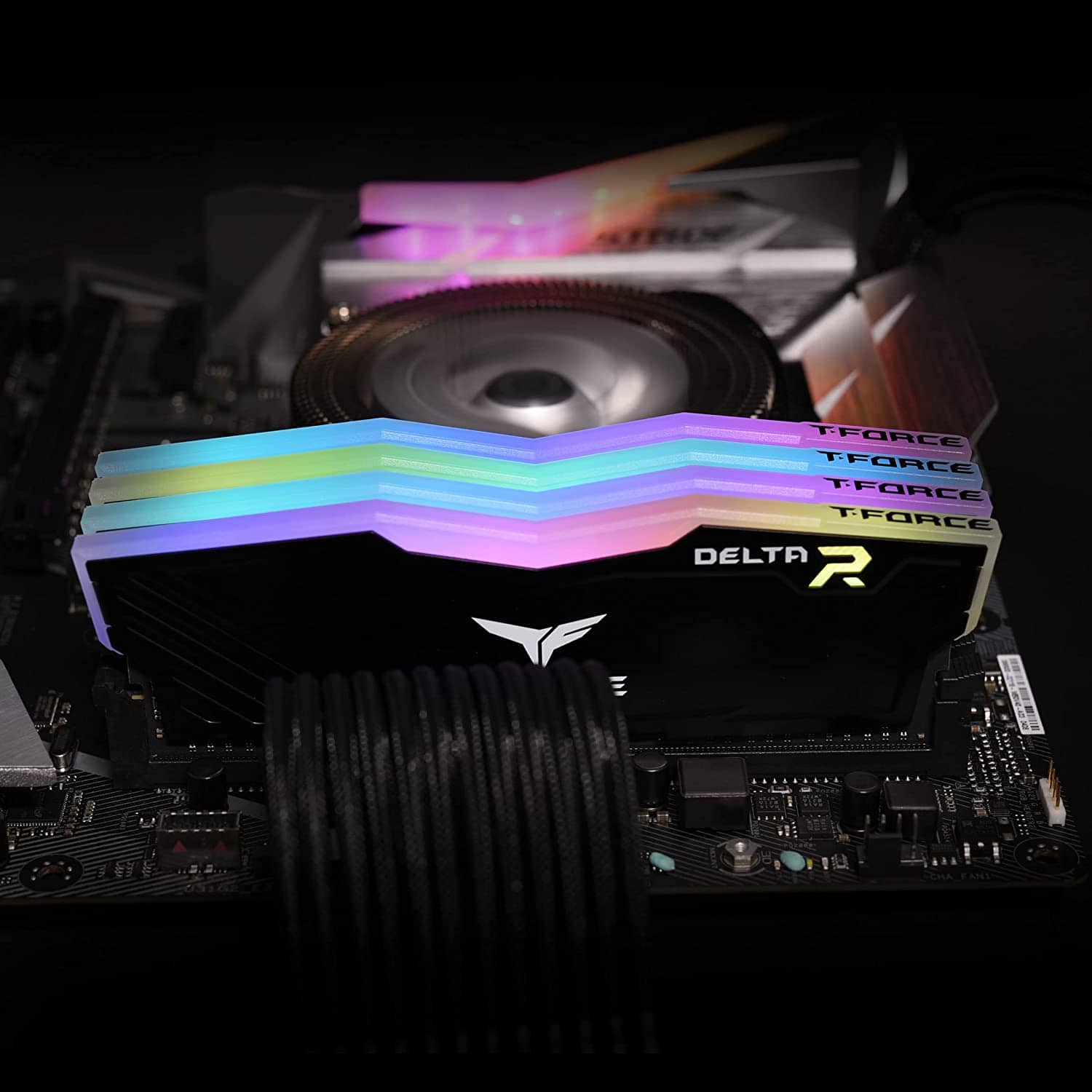Photoshop ram guide: How much ram for photoshop required?

Contents [Show]
The importance of RAM in running Photoshop
RAM plays a crucial role in the performance of Photoshop. When you're working on a project in Photoshop, the software uses your computer's RAM to store the images, collages, layers, and other elements of your project that you are currently working on.
Having enough RAM ensures that Photoshop can store and access these elements quickly, allowing you to work smoothly and efficiently. Insufficient RAM can lead to slow
performance, lagging, and even crashes, frustrating and disruptive to your creative process.
Additionally, Photoshop can be a memory-intensive application, especially when working with large files or complex compositions. If your computer needs more RAM, Photoshop may need to rely on your hard drive to store temporary data, which can significantly slow down your workflow.
How much ram does Photoshop use?
The amount of RAM Photoshop uses depends on several factors, such as the complexity of your project, the number of layers, and the number of applications running simultaneously on your computer.
Photoshop generally requires a minimum of 8 GB of RAM to run smoothly, but the recommended amount is 16 GB or more. This is especially true when working with large files, such as high-resolution images or multi-layered compositions.
If you need more RAM, Photoshop may need to rely on your hard drive to store temporary data, which can cause your workflow to slow down significantly. This is known as "paging" or "swapping,"
To avoid this, it's best to have more RAM than the minimum requirement for Photoshop. This allows the software to store the necessary data in RAM and access it quickly, significantly improving performance and reducing the risk of crashes and other issues.
Minimum RAM Requirements for Photoshop
The minimum RAM requirement for running Photoshop is 8 GB. However, it's important to note that this is just the minimum requirement, and having more RAM can significantly improve performance and allow you to work more efficiently.
Additionally, running other applications on your computer simultaneously can further reduce the available RAM for Photoshop, leading to performance issues.
Therefore, it's recommended to have at least 16 GB of RAM for a better Photoshop experience. This can ensure you have enough memory to work with even large files and complex compositions and avoid frustrating performance issues.
is 4gb ram enough for Photoshop?
While 4 GB of RAM may technically be enough to run Photoshop, it's not recommended. This is because Photoshop is a memory-intensive application, and 4 GB of RAM may need to provide more memory to store and access the images, layers quickly, and other elements of your project.
If you only have 4 GB of RAM, you may experience slow performance, lagging, and even crashes while working in Photoshop, especially if you're working with larger files or complex compositions. Additionally, if you're running other applications simultaneously, this can further reduce the amount of available RAM for Photoshop.
is 8gb ram enough for Photoshop
8 GB of RAM is the minimum recommended amount for running Photoshop smoothly. While you can technically run Photoshop on 8 GB of RAM, you may need more if you're working with larger files or complex compositions.
With 8 GB of RAM, you may experience some slow performance or lagging, especially if you're running other applications simultaneously. However, if you're only working on smaller projects and not pushing Photoshop to its limits, 8 GB of RAM may be sufficient.
is 16gb ram enough for Photoshop?
Yes, 16 GB of RAM is enough to run Photoshop efficiently. With 16 GB of RAM, you can work with larger files and complex compositions smoothly without experiencing any significant performance issues.
16 GB of RAM is the recommended amount for Photoshop and is sufficient for most professional-level projects. This amount of RAM allows you to work with multiple images and layers simultaneously while running other applications in the background.
Additionally, having 16 GB of RAM provides a buffer that can help prevent paging or swapping, which occurs when your computer runs out of available RAM and needs to use the hard drive as a substitute. This can cause your workflow to slow down significantly and reduce your productivity.
Is 32GB RAM overkill for photo editing in Photoshop
While 32 GB of RAM may be overkill for most photo editing projects in Photoshop, it can benefit certain projects and workflows.
For example, 32 GB of RAM can help ensure smooth performance and prevent slowdowns or crashes if you're working with extremely large or multiple files simultaneously. Additionally, if you're working with video or 3D content, which requires a significant amount of memory, having 32 GB of RAM can be beneficial.
However, 32 GB of RAM is likely more than necessary for most photo editing projects. 16 GB of RAM is usually sufficient for most professional-level projects and workflows. More than that may only provide significant benefits if you're working with particularly large or complex compositions.
Problems that may occur if the minimum RAM requirements are not met
If the minimum RAM requirements for running Photoshop are met, you may experience several problems affecting your workflow and productivity. These problems include:
-
Slow performance: When you need more RAM, Photoshop may not be able to store and access the images, layers, and other elements of your project quickly. This can lead to slow performance, lagging, and other issues that can be frustrating and time-consuming.
-
Crashes and freezes: Insufficient RAM can cause Photoshop to crash or freeze, especially when working with large files or complex compositions. These crashes and freezes can lead to lost work and significantly disrupt your workflow.
-
Incomplete operations: If you try to perform operations in Photoshop that require more memory than you have available, the operation may need to be completed or may complete incorrectly.
-
Inability to open files: If you try to open a file in Photoshop that requires more memory than you have available, you may need help to open the file. This can be frustrating, especially if the file is important for your project
Benefits of having more ram
Having more RAM can provide several benefits when running Photoshop, including:
-
Improved performance: More RAM allows Photoshop to store and access your project's images, layers, and other elements more quickly and efficiently. This can lead to faster performance, smoother editing, and a more seamless workflow.
-
Ability to work with larger files: With more RAM, you can work with larger files and complex compositions without experiencing significant performance issues. This allows you to take on more ambitious projects and push the boundaries of your creativity.
-
Ability to run multiple applications simultaneously: With more RAM, you can run multiple applications simultaneously without slowing down your computer. It can be useful if you need to reference other files or information while working in Photoshop.
-
Less reliance on hard drive: When you don't have enough RAM, Photoshop may need to rely on your hard drive to store temporary data. This can significantly slow down your workflow. With more RAM, Photoshop can store more data in memory, reducing the need to rely on your hard drive.
-
Less risk of crashes and freezes: With more RAM, you're less likely to experience crashes and freezes while working in Photoshop, especially with larger files or complex compositions.
More RAM can significantly improve your Photoshop experience, allowing you to work more efficiently, take on more ambitious projects, and avoid frustrating performance issues.
Scenarios where more or less RAM is required
The amount of RAM required for Photoshop can vary depending on several factors. Here are some scenarios where more or less RAM required:
-
Working with large files: If you're working with large files or complex compositions, more RAM is required to ensure smooth performance. This is because larger files require more memory to store and access.
-
Running multiple applications: If you're running other applications simultaneously while working in Photoshop, more RAM is required to ensure smooth performance. This is because other applications can use up available memory, reducing the amount of RAM available for Photoshop.
-
Working with 3D content: If you're working with 3D content in Photoshop, more RAM is required to ensure smooth performance. This is because 3D content requires significant memory to render and manipulate.
-
Working with video content: If you're working with video content in Photoshop, more RAM is required to ensure smooth performance. This is because video content requires significant memory to render and manipulate.
-
Working on smaller projects: If you're working on smaller projects, less RAM is required to ensure smooth performance. This is because smaller projects require less memory to store and access.
Have you ever experienced the frustration of working on a large Photoshop project only to have your computer slow to a crawl? You know what I'm talking about - the spinning wheel of doom, the endless loading screens, and the unbearable wait times. It's enough to make even the most patient creatives pull their hair out.
But fear not. The solution to your Photoshop woes may be simpler than you think - it all comes down to RAM. Yes, that tiny piece of hardware tucked away in your computer can significantly impact how well Photoshop runs. In this blog post, we'll explore just how much RAM you need for Photoshop, and why having the right amount can make all the difference in your creative process. Let's dive into the world of RAM and Photoshop.
What is Photoshop
Photoshop is a popular software application used for image editing and manipulation. Developed by Adobe, it is considered the industry standard for professional image editing. It is used by photographers, graphic designers, and other visual artists to create and edit images for various purposes. With its powerful tools and features, Photoshop allows users to adjust colors, add effects, retouch images, and create complex compositions with multiple layers
Photoshop CC 2023 system requirements
Operating System:
- Microsoft Windows 10 (64-bit) versions 1809 or later
- macOS 10.15 Catalina or late
Processor:
- Intel or AMD processor with 64-bit support; 2 GHz or faster processor
RAM:
Graphics Card:
- NVIDIA GeForce GTX 1050 or equivalent; NVIDIA GeForce GTX 1660 or Quadro T1000 is recommended. Check out here:
- AMD Radeon Pro 555 or equivalent; AMD Radeon Pro 580 or Radeon Pro Vega 64 or equivalent is recommended. Check out here:
- 2 GB or more of GPU VRAM
Hard Disk:
- 4 GB or more
1. TEAMGROUP T-Force Delta RGB DDR4 16GB 4000MHz
Photoshop ram guide: How much ram for photoshop required?
TEAMGROUP T-Force Delta RGB DDR4 16GB 4000MHz
View on Amazon
Key Specifications
Memory Size: 16 GBRAM Memory Technology: DDR4
Memory Speed: 4000 MHz
The TEAMGROUP T-Force Delta DDR4 16GB 4000MHz RGB RAM kit is a high-performance memory solution designed for demanding PC users and gamers. With a frequency of 4000MHz, this kit delivers lightning-fast data transfer rates that ensure smooth and responsive system performance.
The T-Force Delta RGB DDR4 RAM kit adds a touch of elegance to any build. Its striking RGB lighting system offers various colors and effects, which can be controlled using the included software. This kit seamlessly integrates with your existing RGB setup with support for popular RGB sync technologies, including ASUS Aura Sync, MSI Mystic Light Sync, and GIGABYTE RGB Fusion.
Built with high-quality components and tested to rigorous standards, the T-Force Delta RGB DDR4 RAM kit delivers reliable performance and stability. It is compatible with Intel and AMD platforms and supports XMP 2.0 profiles for easy overclocking.
Whether you're a gamer looking for a competitive edge or a power user needing a performance boost, the TEAMGROUP T-Force Delta RGB DDR4 16GB (2x8GB) 4000MHz RAM kit is an excellent choice. It offers an unbeatable combination of speed, style, and reliability, making it one of the best RAM kits today.
| High Performance | Higher Price |
| Stylish Design | |
| Reliable Performance |
Conclusion
RAM plays a crucial role in the performance of Photoshop. Having enough RAM ensures that Photoshop can store and access the necessary data quickly and efficiently, allowing for smoother performance, faster editing, and a more seamless workflow.
The minimum RAM requirement for running Photoshop is 8 GB, but having more RAM is recommended for a better overall Photoshop experience. 16 GB of RAM is the recommended amount for most professional-level projects. More than that may be necessary for extremely large or complex compositions or when working with video or 3D content.
Meeting the minimum RAM requirements for Photoshop can lead to slow performance, crashes, incomplete operations, and other problems that can significantly impact your productivity and workflow. It's important to have enough RAM to ensure smooth performance and avoid these issues.



0 Comments